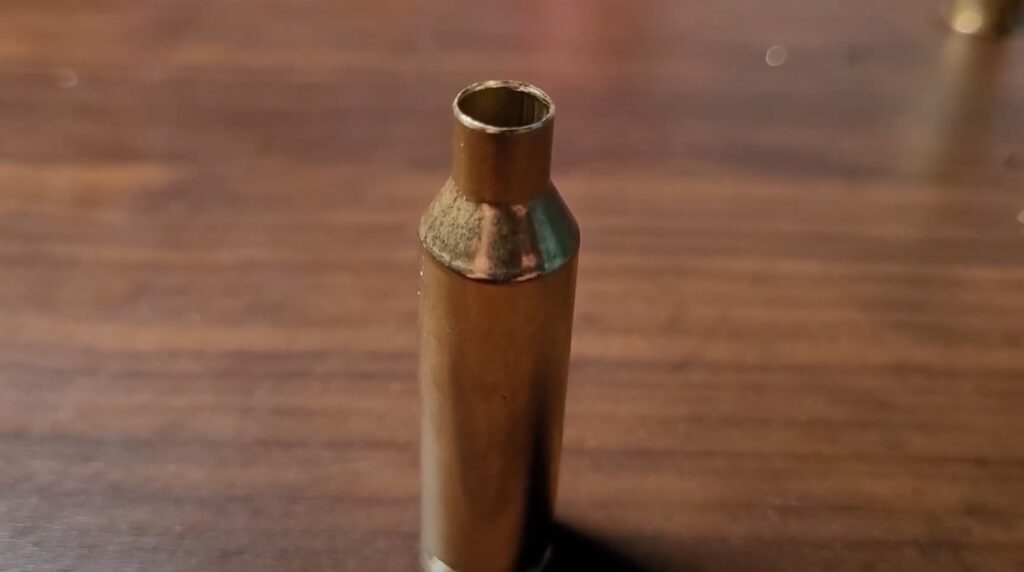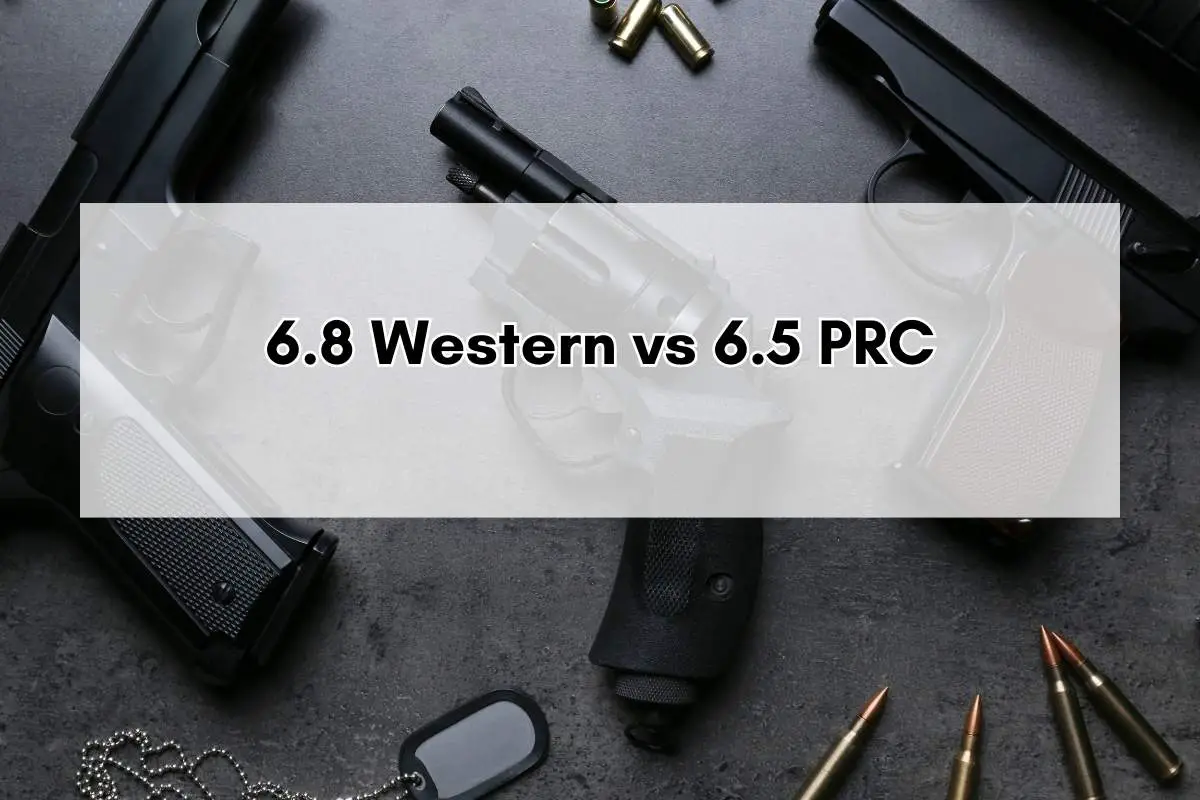The 6.8 Western and 6.5 PRC are two modern long-range cartridges that have gained popularity among hunters and precision shooters. Both offer impressive ballistic performance and accuracy at extended distances. These rounds were designed to meet the growing demand for efficient, long-range options in a short-action rifle.
The 6.8 Western delivers slightly more energy and uses heavier bullets, while the 6.5 PRC offers less recoil and flatter trajectories. The 6.8 Western shoots 15-20 grain heavier bullets at similar velocities to the 6.5 PRC, resulting in more downrange energy. This can be an advantage for hunters seeking maximum impact on larger game. The 6.5 PRC, with its lighter bullets, may be preferred by those who want less felt recoil or need extremely flat-shooting rounds for long-range target shooting.
Choosing between these two cartridges often comes down to specific needs and preferences. Factors like intended use, rifle compatibility, and ammo availability play important roles in the decision. Both cartridges are capable of excellent accuracy and performance in the right hands.
Key Takeaways
- Both cartridges excel at long-range shooting and hunting applications
- The 6.8 Western offers more energy, while the 6.5 PRC provides less recoil
- Cartridge choice depends on intended use and shooter preferences
Overview of 6.8 Western
The 6.8 Western is a modern long-range cartridge designed for hunters and precision shooters. It offers improved ballistics and energy retention compared to older cartridges.
History and Development
Winchester and Browning jointly developed the 6.8 Western cartridge in 2021. They aimed to create a versatile round for big game hunting and long-range shooting.
The cartridge is based on a modified .270 WSM case. It’s designed to work with heavy, high-ballistic coefficient bullets.
Engineers optimized the case capacity and neck length for better accuracy and performance. The 6.8 Western fills a niche between traditional hunting rounds and specialized long-range cartridges.
Ballistic Characteristics
The 6.8 Western fires .277″ diameter bullets, typically weighing between 165 and 175 grains. It achieves muzzle velocities around 2,970 fps with these heavy projectiles.
Key ballistic features include:
- High ballistic coefficients for improved long-range performance
- Excellent energy retention for hunting large game
- Flatter trajectory compared to traditional hunting cartridges
- Less wind drift than many competing cartridges
The 6.8 Western maintains supersonic velocities beyond 1,000 yards in ideal conditions. This makes it suitable for both hunting and long-range target shooting.
Rifle Platforms and Availability
Several major manufacturers offer rifles chambered in 6.8 Western. Popular options include:
- Winchester Model 70
- Browning X-Bolt
- Savage 110 Precision
- Bergara B-14 Ridge
Most rifles feature 1:8″ twist barrels to stabilize the heavy bullets. Both bolt-action and semi-automatic platforms are available.
Factory ammunition is produced by Winchester, Browning, and other major manufacturers. Handloaders can find components from various bullet makers. While not as common as some established cartridges, 6.8 Western ammunition and components are becoming more widely available.
Overview of 6.5 PRC
The 6.5 PRC is a modern cartridge designed for long-range shooting. It offers high ballistic performance in a compact package.
Design Intentions
The 6.5 PRC was created to maximize the potential of 6.5mm bullets. It aims to provide excellent accuracy and energy at extended ranges.
The cartridge uses a shortened .300 Ruger Compact Magnum case. This allows it to fit in standard-length actions.
Hornady developed the 6.5 PRC to work well with high-ballistic coefficient 6.5mm bullets. These bullets maintain velocity and resist wind drift effectively.
Performance Metrics
The 6.5 PRC delivers impressive ballistic performance. It can push 156-grain bullets to speeds up to 3000 fps.
At 1000 yards, the 6.5 PRC retains significant energy. This makes it suitable for long-range hunting and target shooting.
The cartridge offers a flat trajectory. This helps shooters make accurate shots at varying distances.
Recoil is moderate compared to larger magnum cartridges. This allows for faster follow-up shots and extended practice sessions.
Adoption and Uses
Hunters have embraced the 6.5 PRC for medium to large game. Its energy and accuracy make it effective on deer, elk, and similar-sized animals.
Long-range target shooters appreciate the 6.5 PRC’s ballistic performance. It excels in precision rifle competitions.
Several major rifle manufacturers now offer 6.5 PRC chamberings. This has helped increase its popularity among shooters.
The cartridge works well in both bolt-action and semi-automatic rifles. This versatility has contributed to its growing adoption.
Comparative Analysis
The 6.8 Western and 6.5 PRC differ in key performance areas. These include energy delivery, bullet trajectory, recoil, and ammunition options.
Energy and Trajectory
The 6.8 Western delivers more energy than the 6.5 PRC, especially at longer ranges. It uses heavier bullets, up to 175 grains, compared to the 6.5 PRC’s 156-grain maximum.
The 6.8 Western maintains a flatter trajectory due to its higher ballistic coefficient. This helps with long-range accuracy and reduces wind drift.
At 1000 yards, the 6.8 Western retains more energy. This can be crucial for ethical long-range hunting shots.
Recoil and Shootability
The 6.5 PRC has less recoil than the 6.8 Western. This makes it easier to shoot, especially for smaller-framed hunters or during extended shooting sessions.
Less recoil also means faster follow-up shots and potentially better accuracy for some shooters. The 6.5 PRC’s lower recoil can help reduce flinching.
The 6.8 Western’s stronger recoil may require more practice to master. However, many experienced shooters find it manageable.
Ammunition and Handloading
Both cartridges offer factory ammunition options, but the 6.5 PRC has been around longer and may have more choices available.
The 6.8 Western uses .277″ diameter bullets, common in .270 Winchester rounds. This gives handloaders access to a wide range of projectiles.
The 6.5 PRC uses 6.5mm bullets, popular in long-range shooting. These bullets often have high ballistic coefficients.
Handloaders can fine-tune loads for both cartridges. The 6.8 Western’s larger case capacity allows for more powder, potentially leading to higher velocities.
Hunting Applications
The 6.8 Western and 6.5 PRC offer different strengths for hunting various game animals. Each cartridge has unique characteristics that affect their ideal uses in the field.
Optimal Game Size
The 6.8 Western shines when hunting larger game. It uses heavier bullets than the 6.5 PRC, making it better suited for big animals like elk and moose. The larger bullet diameter creates a bigger wound channel, increasing the chances of a quick, ethical kill.
For medium-sized game like deer and antelope, both cartridges perform well. The 6.5 PRC’s lighter bullets and flatter trajectory give it an edge for these animals, especially at longer ranges.
Hunters pursuing smaller game may prefer the 6.5 PRC. Its lower recoil allows for faster follow-up shots if needed.
Effective Ranges
Both cartridges excel at long-range hunting, but they have different strengths. The 6.5 PRC has a flatter trajectory, making it easier to hit targets at extended distances. It also experiences less wind drift, which is crucial for precise shots in varying conditions.
The 6.8 Western maintains more energy at longer ranges due to its heavier bullets. This makes it more effective for cleanly taking down larger game at distance.
For shots within 400 yards, both cartridges perform similarly. Beyond that, the 6.5 PRC’s flatter trajectory gives it a slight accuracy advantage, while the 6.8 Western delivers more power on target.

Precision Shooting Insights
The 6.8 Western and 6.5 PRC excel in long-range shooting and competitive events. Both cartridges offer distinct advantages for precision shooters seeking top performance.
Long-Range Performance
The 6.8 Western shines at extended ranges. It shoots heavier bullets with high ballistic coefficients, maintaining energy downrange. This cartridge bucks wind well and delivers hard-hitting terminal performance.
The 6.5 PRC also impresses at distance. It fires sleek, aerodynamic projectiles that resist wind drift. The 6.5 PRC offers a flatter trajectory than the 6.8 Western, making it easier to connect at long range.
Both cartridges are capable of sub-MOA accuracy in skilled hands. The 6.8 Western may have a slight edge in barrel life due to its larger bore diameter.
Precision Rifle Competitions
In precision rifle matches, the 6.5 PRC often has an advantage. Its lower recoil allows for faster follow-up shots and less shooter fatigue during long strings of fire.
The 6.8 Western’s higher energy can be beneficial for engaging steel targets. It’s particularly effective on heavier plates at extended distances.
Both cartridges are popular choices in the Precision Rifle Series (PRS) and National Rifle League (NRL) competitions. The ideal selection often comes down to individual shooter preference and specific match conditions.
Barrel Life and Maintenance
Barrel life is an important factor when comparing the 6.8 Western and 6.5 PRC. Both cartridges are known for their high-performance characteristics, which can impact barrel longevity.
The 6.5 PRC typically has a slightly longer barrel life compared to the 6.8 Western. This is due to its smaller bore diameter and lower powder capacity.
Factors affecting barrel life:
- Bullet diameter
- Powder capacity
- Shooting frequency
- Cleaning habits
Regular maintenance is crucial for both cartridges. Proper cleaning and care can extend barrel life significantly.
Tips for maintaining barrel quality:
- Clean after each shooting session
- Use appropriate cleaning solvents
- Avoid over-cleaning, which can cause unnecessary wear
- Monitor accuracy and velocity changes
Shooters should expect to replace barrels after approximately 1,500 to 2,000 rounds for the 6.8 Western, and 2,000 to 2,500 rounds for the 6.5 PRC. These numbers can vary based on individual usage and maintenance practices.
Both cartridges require attention to detail in maintenance. With proper care, shooters can maximize the performance and longevity of their firearms, regardless of the chosen cartridge.
Market Considerations
The 6.8 Western and 6.5 PRC differ in price and brand availability. These factors can impact a shooter’s choice between the two cartridges.
Cost Analysis
Ammunition prices for the 6.8 Western tend to be higher than the 6.5 PRC. This is partly due to the 6.8 Western being newer and less widely produced. A box of 20 rounds for the 6.8 Western typically costs $10-15 more than the 6.5 PRC.
Rifle prices also vary. 6.5 PRC rifles are more common, offering a wider range of options at different price points. 6.8 Western rifles are less abundant, often commanding a premium.
Reloading components for both cartridges are available, but 6.5 PRC components are easier to find and generally less expensive.
Brand Variations
Several manufacturers produce ammunition and rifles for both cartridges, but with some differences:
- 6.5 PRC: Hornady, Federal, Nosler, Browning
- 6.8 Western: Winchester, Browning, Nosler
Rifle brands offering 6.5 PRC models include:
- Ruger
- Bergara
- Savage
- Tikka
6.8 Western rifles are mainly produced by:
- Winchester
- Browning
- Christensen Arms
This limited selection for the 6.8 Western may impact availability and customization options for shooters.
Frequently Asked Questions
The 6.8 Western and 6.5 PRC differ in ballistics, recoil, and hunting applications. These cartridges have distinct characteristics that affect their performance in various shooting scenarios.
What are the comparative ballistics of 6.8 Western and 6.5 PRC at 1000 yards?
At 1000 yards, the 6.8 Western generally retains more energy than the 6.5 PRC. The 6.8 Western’s heavier bullets, up to 175 grains, give it an edge in wind drift resistance.
The 6.5 PRC typically has a flatter trajectory due to its higher ballistic coefficient. This can make long-range shot placement easier for some shooters.
How does the recoil of the 6.8 Western compare to that of the 6.5 PRC?
The 6.8 Western produces more recoil than the 6.5 PRC. This is due to its larger case capacity and heavier bullet weights.
The 6.5 PRC has significantly less recoil than the 6.8 Western. Shooters sensitive to recoil may find the 6.5 PRC more comfortable for extended shooting sessions.
What are the advantages of using 6.8 Western for deer hunting over 6.5 PRC?
The 6.8 Western offers more energy transfer for deer hunting, especially at longer ranges. Its heavier bullets can be beneficial in windy conditions.
The cartridge’s larger diameter can create wider wound channels. This may lead to faster, more ethical kills on medium-sized game like deer.
In what scenarios is 6.8 Western considered superior to 7mm Rem Mag?
The 6.8 Western is often preferred in situations requiring less recoil than the 7mm Rem Mag. It can be more comfortable to shoot in lightweight hunting rifles.
For long-range hunting of medium-sized game, the 6.8 Western’s modern design can offer better efficiency and accuracy than the older 7mm Rem Mag.
Can the 6.8 Western cartridge be used for long-range shooting effectively?
Yes, the 6.8 Western is designed for long-range performance. Its high ballistic coefficient bullets maintain velocity and energy at extended distances.
The cartridge’s design allows for good accuracy in factory rifles. Many shooters report consistent groups at ranges beyond 1000 yards.
What are the intended game targets for the 6.8 Western cartridge?
The 6.8 Western is suitable for medium to large game. It’s effective on animals like deer, elk, and bear.
Its energy retention makes it a good choice for long-range hunting scenarios. Hunters in open terrain often appreciate its extended effective range on big game.

